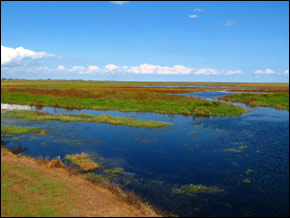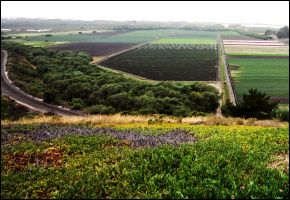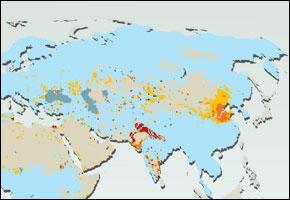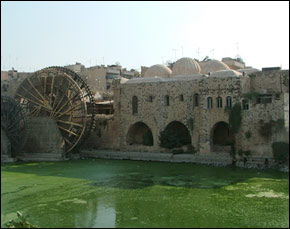Everglades Restoration Program Pays Ranchers to Protect Water
Ranchers would be paid to use their land as a system of natural wetlands.
A program that pays ranchers to use pastures as water-retention ponds could provide one-sixth of the water needed to restore the Everglades for a fraction of the cost of current treatments, according to program proponents the Palm Beach Post reports.
The plan presently in place is a multi-billion dollar system of reservoirs and storage wells.
The pilot program run by the Worldwide Fund for Nature (WWF) involves eight ranchers in the lands surrounding the Kissimmee River north of Lake Okeechobee. The goal is to turn low-lying pastures into wetlands through a system of pumps and ponds. Ranchers would collect wet season rains in their fields and release the water southward in the dry season.
In 2010 the ranchers will be paid $660,000 to use 10,000 acres. Expanding the program to a proposed 250,000 acres would cost $16.5 million per year for land use, plus several million more in infrastructure costs, according to the Post.
Setting the proper price is one concern for the project. The ranchers are currently paid a premium for their participation, but the program’s director envisions a future bidding process that would lower prices.
However, ranchers must have enough financial incentive to buy into the program.
“Ranchers have the capacity to store water if — and it’s a big ‘if’ — it becomes profitable to do so,” Sarah Lynch, who leads the project for WWF, told the Post.
Despite uncertainty over the future price of ecosystem services, the cost is far less than the system of reservoirs currently on the table. The South Florida Water Management District, which leads the Everglades restoration, increased reservoir cost estimates by 10 percent this week to account for wildlife protection, the Olympian reports. Those redesigns will add $50 million to the cost of the largest planned reservoir.
Critics of the WWF program argue that the plan doesn’t prevent ranchers from selling land to a developer once their storage contract expires.
“The bad thing is that you don’t have permanent conservation,” said Keith Fountain, land protection director for the Nature Conservancy in Florida, to the Post. “We want to achieve permanent conservation.”
That was idea Florida Governor Charlie Crist had when he signed a $536 million land deal with U.S. Sugar Corp. in 2008.
The 73,000 acres–reduced from 180,00 because of the financial crisis–would be used to construct the reservoirs in the state’s plan to restore natural flows between Lake Okeechobee and south Florida. The deal is opposed by rival sugar company Florida Crystals and the Miccosukee Indian Tribe, which lives on a reservation in the Everglades. They argue that the deal is a waste of tax dollars and that the state does not have the funds to build the reservoirs. Both are plaintiffs in a lawsuit brought against the state.
The Florida Supreme Court said it will give a final ruling on the case at the beginning of April, the Miami Herald reports.
Source: Palm Beach Post, Olympian
Brett writes about agriculture, energy, infrastructure, and the politics and economics of water in the United States. He also writes the Federal Water Tap, Circle of Blue’s weekly digest of U.S. government water news. He is the winner of two Society of Environmental Journalists reporting awards, one of the top honors in American environmental journalism: first place for explanatory reporting for a series on septic system pollution in the United States(2016) and third place for beat reporting in a small market (2014). He received the Sierra Club’s Distinguished Service Award in 2018. Brett lives in Seattle, where he hikes the mountains and bakes pies. Contact Brett Walton











Leave a Reply
Want to join the discussion?Feel free to contribute!